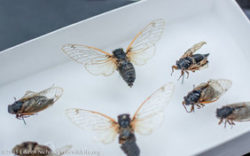A recent article in the New York Times highlights the way urban environments are affecting evolution in a variety of species. From European blackbirds with high-pitched calls to beat the sound of traffic to spiders adapted to build their webs closer to light poles, the dynamic and harsh urban environment is changing our biodiversity. Citizen scientists are crucial to understanding and documenting these changes. Below we highlight 5 citizen science projects that can be done in urban areas so you can help researchers across the world! You can find 1500 more projects and events on the SciStarter project finder.

Urban Buzz
Collect cicadas and send them to scientists to learn how this insect is changing with climate change and habitat loss. Get started here.

Celebrate Urban Birds
Observe birds in your area to help scientists learn how habitat improvement affects birds in urban environments. Get started here.
Urban Nature Research Center Projects
The UNCR out of the Natural History Museum of Los Angeles runs several urban biodiversity studies on everything from squirrels to snails. Learn more about SLIME, RASCALS, the Southern California Squirrel Survey, and get started now!
Trees Please 
You can help improve Hamilton Ontario’s urban forests and air quality with Trees Please! You can collect data for an interactive database of urban tree health that will ultimately be compared with air quality data. Get started here.

Dark Sky Meter
Help measure light pollution in your area with the Dark Sky Meter app. You’ll help create a global map of nighttime light pollution. Get started here.
Want more citizen science? Check out SciStarter’s Project Finder! With 1100+ citizen science projects spanning every field of research, task and age group, there’s something for everyone!

